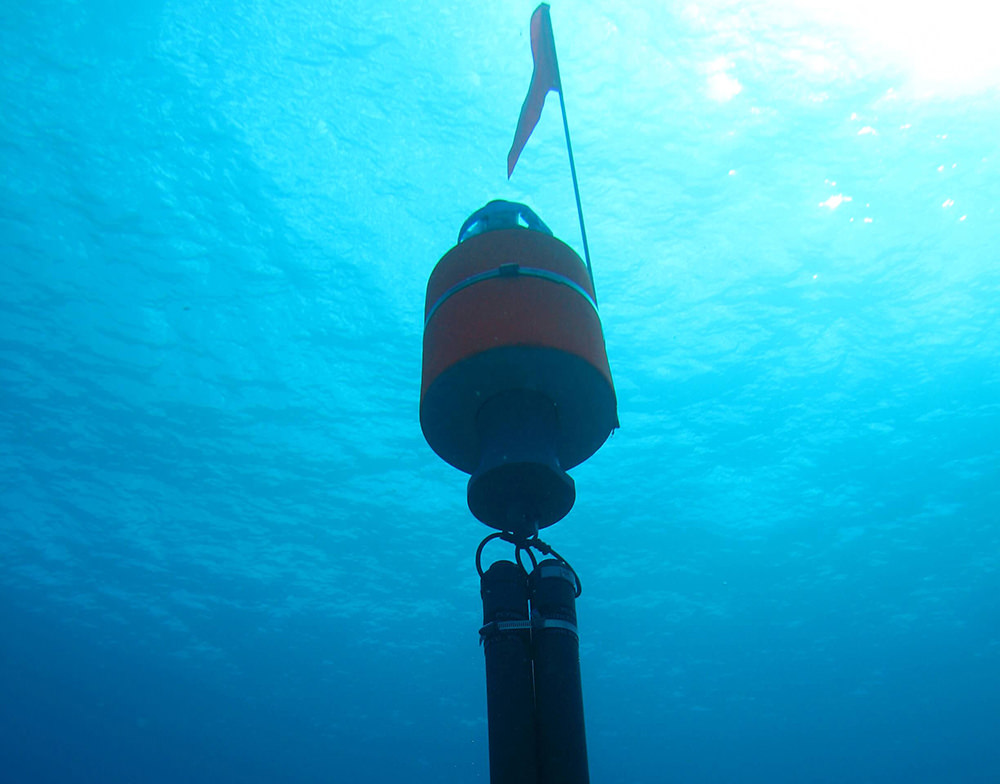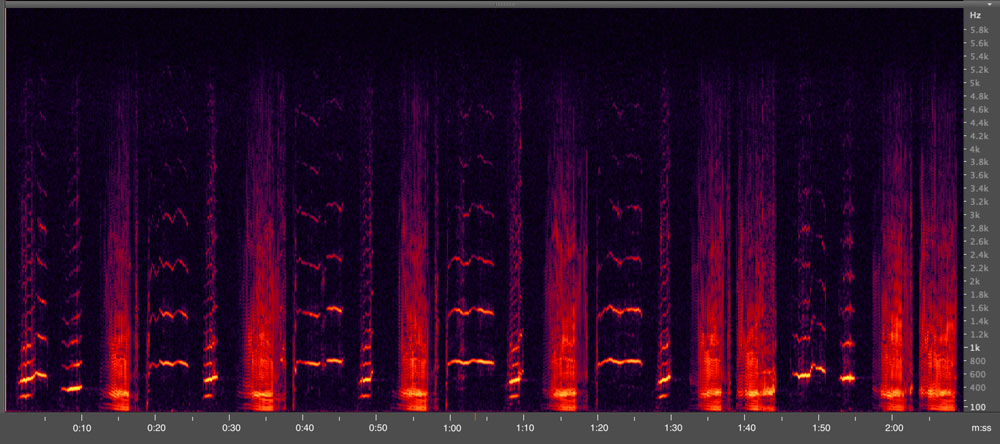Acoustic Monitoring of Humpback Whale Chorusing

Between December and April, male humpback whale song becomes the dominant source of underwater ambient noise in many parts of Hawai‘i, creating a chorus of whale singing. Because whale song can transmit over several miles, the acoustic energy produced by singing whales can be used to track the relative presence of whales in an area, revealing the timing of their arrival, their peak abundance, and their departure. The abundance of song can also be used to compare the relative occurrence of whales across locations and between years, providing a useful metric for studying geographic variability and annual trends in whale presence.
Sanctuary researchers obtain metrics of whale song abundance through bottom-moored acoustic recorders that measure the soundscape of an area, which includes whale chorusing, over the course of the breeding season. Automated algorithms then quantify the amount of whale song present in recordings.
This effort is led by the sanctuary in partnership with Oceanwide Science Institute and with partial funding support from the U.S. Navy via the SanctSound Project, an Office of National Marine Sanctuaries endeavor to characterize the soundscapes in seven national marine sanctuaries and one marine national monument.

Each whale season, the sanctuary deploys ecological acoustic recorders (EARs) at multiple locations in waters around Maui Nui (Maui, Moloka‘i, Lāna‘i, and Kaho‘olawe) at sites ranging in depth between 15 and 200m (50 and 650 feet). In the fall of 2018, five SoundTrap recorders began being deployed in sanctuary waters off Hawai‘i island, Maui, Moloka‘i, O‘ahu, and Kaua‘i as part of the SanctSound Project. Four SoundTrap recorders and one EAR were also deployed in Papahānaumokuākea Marine National Monument in July 2019 as part of the project. This network of recorders provides broad acoustic coverage that allows the sanctuary and the monument to jointly examine humpback whale presence across the Hawaiian archipelago.

